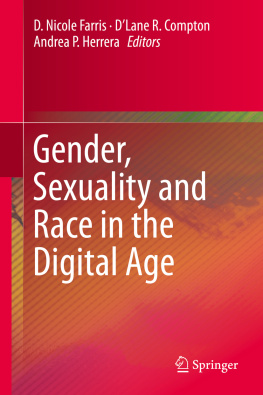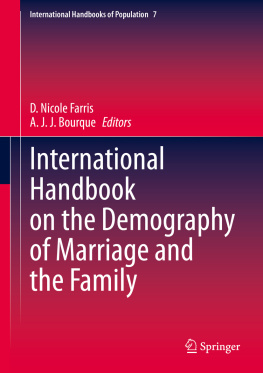William Wayne Farris - Daily Life and Demographics in Ancient Japan
Here you can read online William Wayne Farris - Daily Life and Demographics in Ancient Japan full text of the book (entire story) in english for free. Download pdf and epub, get meaning, cover and reviews about this ebook. year: 2009, publisher: University of Michigan Center for South and Southeast Asian Studies, genre: Home and family. Description of the work, (preface) as well as reviews are available. Best literature library LitArk.com created for fans of good reading and offers a wide selection of genres:
Romance novel
Science fiction
Adventure
Detective
Science
History
Home and family
Prose
Art
Politics
Computer
Non-fiction
Religion
Business
Children
Humor
Choose a favorite category and find really read worthwhile books. Enjoy immersion in the world of imagination, feel the emotions of the characters or learn something new for yourself, make an fascinating discovery.

- Book:Daily Life and Demographics in Ancient Japan
- Author:
- Publisher:University of Michigan Center for South and Southeast Asian Studies
- Genre:
- Year:2009
- Rating:5 / 5
- Favourites:Add to favourites
- Your mark:
- 100
- 1
- 2
- 3
- 4
- 5
Daily Life and Demographics in Ancient Japan: summary, description and annotation
We offer to read an annotation, description, summary or preface (depends on what the author of the book "Daily Life and Demographics in Ancient Japan" wrote himself). If you haven't found the necessary information about the book — write in the comments, we will try to find it.
Daily Life and Demographics in Ancient Japan — read online for free the complete book (whole text) full work
Below is the text of the book, divided by pages. System saving the place of the last page read, allows you to conveniently read the book "Daily Life and Demographics in Ancient Japan" online for free, without having to search again every time where you left off. Put a bookmark, and you can go to the page where you finished reading at any time.
Font size:
Interval:
Bookmark:

Daily Life and Demographics in Ancient Japan
Michigan Monograph Series in Japanese Studies
Number 63
Center for Japanese Studies
The University of Michigan
Daily Life and Demographics in Ancient Japan
William Wayne Farris
Center for Japanese Studies
The University of Michigan
Ann Arbor, 2009
Open access edition funded by the National Endowment for the Humanities / Andrew W. Mellon Foundation Humanities Open Book Program
Copyright 2009 by The Regents of the University of Michigan
All rights reserved.
Published by the Center for Japanese Studies,
The University of Michigan
1007 E. Huron St.
Ann Arbor, MI 48104-1690
Library of Congress Cataloging in Publication Data
Farris, William Wayne.
Daily life and demographics in ancient Japan / William Wayne Farris.
p. cm.(Michigan monograph series in Japanese studies; no. 63)
Includes bibliographical references and index.
ISBN 978-1-929280-49-0 (cloth : alk. paper)ISBN 978-1-929280-50-6 (pbk. : alk. paper)
1. JapanPopulationHistory. 2. JapanSocial conditionsTo 1600. I. Title. II. Series.
HB3651.F368 2009
95Z.01dc22
2008044108
This book was set in Palatino Macron.
Kanji set in Hiragino Mincho Pro W3.
This publication meets the ANSI/NISO Standards for Permanence of Paper for Publications and Documents in Libraries and Archives (Z39.481992).
Printed in the United States of America
ISBN 978-1-929280-49-0 (hardcover)
ISBN 978-1-929280-50-6 (paper)
ISBN 978-0-472-12800-6 (ebook)
ISBN 978-0-472-90196-8 (open access)
The text of this book is licensed under a Creative Commons Attribution-NonCommercial-NoDerivatives 4.0 International License: https://creativecommons.org/licenses/by-nc-nd/4.0/
To Chong-mi
CONTENTS
Wamy sh and Shgai sh
.
.
.
.
.
.
This work came about as a necessary preliminary task to writing a book about Japanese medieval population. After completing the first installment of my research almost twenty years ago in Population, Disease, and Land in Early Japan, 645900, I continued to collect data and interpretations bolstering my previous contentions. Since plunging into the writing of what eventually became Japan's Medieval Population: Famine, Fertility, and Warfare in a Transformative Age, the pace and scope of work on ancient demography both in Japan and the United States has picked up speed.
I would like to thank the JapanU.S. Educational/Fulbright Commission and the Social Science Research Council for funding a year-long stay at Tokyo University in 1999. Special gratitude goes to professors Murai Shsuke and Sato Makoto and the Scholars for a New Ancient History based in Tokyo. Thanks also go to Professor Tomobe Ken'ichi for sponsoring my visiting professorships at Kei University in 2000 and 2003 and to Professor Hong Kazuto for supporting my application to use the world-class facilities of Tokyo University's Historiographical Institute in 2001. The Northeast Asia Council of the Association for Asian Studies and the University of Tennessee provided financial support in that year. I especially appreciated the chance to talk to numerous scholars, including Kuroda Hideo, Amino Yoshihiko, Ishii Susumu, Tamura Noriyoshi, Kit Hiroshi, and Sait Osamu. I feel the deepest gratitude to Han Chong-mi, a Ph.D. candidate at Tokyo University's Division of Comparative Literature, who assisted this project in ways so diverse I cannot list them all.
Any mistakes, of course, are the responsibility of the author.
Scholars have devoted considerable time and attention to the study of population in the ancient era (here defined as terminating in 1150 CE). Meiji scholar Yokoyama Yoshikiyo (182679) was probably the first, but he was eventually followed by the doyen of ancient demographic and quantitative history, Sawada Goichi (18611931), whose remarkable Quantitative Research on Economics and Administration During the Nara Period still defines research three-quarters of a century later.
The energy applied to such a seemingly remote and difficult topic has not been wasted since even those who have not investigated ancient population have admitted its importance. For many, such as George Sansom and John Hall, it was the driving force behind the need for more food and the widespread land clearance that reputedly unleashed elite greed and undermined the Chinese-style state. For William McNeill, it was epidemic disease that caused population to stabilize or even decrease, thereby creating conditions in which a centralized, bureaucratic state could not long survive.
This book attempts to synthesize previous work and analyze ancient population from several perspectives. To this end, it presents an historiographical overview of different figures, showing how they were computed as well as their strengths and weaknesses; makes estimates for the early eighth, mid-tenth, and mid-twelfth centuries; and then tries to evaluate those numbers in light of the relevant social and economic background. Critical variables include mortality parameters such as disease, famine, and war; factors indirectly indicating demographic trends and/or affecting fertility and longevity such as farming and agricultural technology; the labor market and industry; trade and the degree of urbanization; kinship, marriage, and the family; and commoner physical well-being as defined by everyday items (clothing, diet, sanitation, and housing).
The central argument will be that the population of ancient Japan (excluding Hokkaido and the Ryukyu chain) essentially remained static between 700 and 1150, with a decrease occurring around 950. Famine and occasionally war exacerbated this shift. The drift toward lower population in the tenth and early eleventh centuries is readily visible in several areas: agriculture, where large tracts of land reverted to wilderness and peasants adapted technology to a lower worker-to-arable ratio; the labor market, where wages climbed and construction projects remained unfinished; industry, where labor-saving devices became common; and the demonetization of commerce and deurbanization of society. Only after 1050 did the population begin to recover to the level it had achieved in 700, as suggested indirectly by evidence from agriculture, trade, and cities. Hopefully, this essay will lead to new directions in research, even as it reinforces a well-known contention.
HlSTORIOGRAPHICAL OVERVIEW
As is readily apparent from , there is no dearth of numbers purporting to represent Japan's total population at various times throughout the ancient era. It is equally obvious that most "estimates" derive from the Buddhist traditions of Shtoku Taishi or the monk Gyki and give modern scholars no idea about their method of calculationif, indeed, they were computed at all. Leaving these aside, as well as the untenable numbers attributed to In Hidenori and the prewar Home Ministry (Naimushchirikyoku), I shall concentrate on the figures proposed by prewar scholars Yokoyama Yoshikiyo, Kimura Masakoto (18271913), and Sawada Goichi, and then proceed to examine postwar contributions. In evaluating the various estimates, I shall deal with three issues: the nature and validity of the sources, scholarly assumptions, and historical reasoning.
The first attempt to calculate Japan's ancient population occurred in 1879, when Yokoyama Yoshikiyo, a legal and literary scholar, computed three numbers for ninth- and tenth-century Japan. According to Yokoyama, Japan contained 3,694,331 persons in 823, a total he derived as follows. Utilizing an 823 regulation
Font size:
Interval:
Bookmark:
Similar books «Daily Life and Demographics in Ancient Japan»
Look at similar books to Daily Life and Demographics in Ancient Japan. We have selected literature similar in name and meaning in the hope of providing readers with more options to find new, interesting, not yet read works.
Discussion, reviews of the book Daily Life and Demographics in Ancient Japan and just readers' own opinions. Leave your comments, write what you think about the work, its meaning or the main characters. Specify what exactly you liked and what you didn't like, and why you think so.










